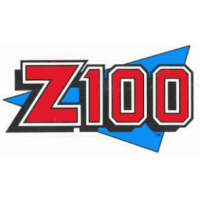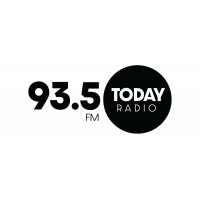
In the new documentary about the launch of WHTZ, Scott Shannon discussed how he arrived in New York one month prior to the sign-on of the station. When it debuted a month later, the first thing wasn’t a fancy pre-produced launch package, but Shannon giving a station ID and five simple words, “It’s Time To Wake Up”.
Those words would define what Z100 would go on to do as it launched a brand that will be celebrating its 40th birthday next year. The Z100 that debuted on that August morning was a shell of what it would be. Its studios were still being built, the transmitter was running at low power. Yet by the time the fall ratings books came out just five months later there it was well atop the market rankings with a 6.2 share in Arbitron and a massive 9.5 share in Birch’s ratings.
Z100 was a mass appeal juggernaut out of the gate. Its launch led to drops at Urban “98.7 Kiss-FM” WRKS and 107.5 WBLS, Rhythmic 92.3 WKTU, Talk/Top 40 hybrid 660 WNBC, Rock/Top 40 95.5 WPLJ, AC 97.1 WYNY, and Talk 770 WABC (which had only given up the last vestiges of its Top 40 format a year and a half prior). Within a year of WHTZ’s launch, WKTU, WPLJ, and Rock “103.5 The Apple” WAPP, would all fully shift to Top 40 seeking to both stall the juggernaut and ride its coattails to greater success. One of two Country outlets in the market at the time, “106.7 Kick-FM” WKHK dropped its format in January and attempted to fill the AC hole in the market between a wounded WYNY and the two remaining Beautiful Music stations; 93.1 WPAT-FM and 105.1 WRFM. The new “106.7 Lite-FM” would go on to outlast all three and become a powerhouse brand in its own right.
Four months ago, Audacy, Shannon’s current employer took another station licensed to Newark NJ and debuted a new Classic Hip Hop format. “94.7 The Block” WXBK would not hire a Program Director until seven weeks after it launched and will not have an on-air personality until a syndicated show hosted by Nick Cannon debuts next week. When the January monthly ratings are released on Tuesday, its weekly numbers project the station remaining in the low 1 share range.
It’s not an apples-to-apples comparison. Unlike Z100, 94.7 has yet to find a way to move its transmitter from New Jersey to Manhattan leaving it with multipath and a lesser signal in parts of the region. But after the same amount of time on the air in an era where it should be so much easier to build word of mouth through social media, there is little engagement about the new brand in the city that invented Hip Hop.
 Just as the jockless Variety Hits format took hold in Canada in the early 2000s before spreading south to the United States, a new variant has spread from Edmonton to Calgary to Winnipeg and has now launched in Toronto. In many ways, the stations known as “Now” in Edmonton and Winnipeg and “Today Radio” in Calgary and Toronto, act as the anti-Jack. The music is much more pop-oriented and contemporary. But most importantly it emphasizes personalities and audience interaction, two things that have gone by the wayside in an American radio marketplace full of pre-recorded multi-market voicetrackers.
Just as the jockless Variety Hits format took hold in Canada in the early 2000s before spreading south to the United States, a new variant has spread from Edmonton to Calgary to Winnipeg and has now launched in Toronto. In many ways, the stations known as “Now” in Edmonton and Winnipeg and “Today Radio” in Calgary and Toronto, act as the anti-Jack. The music is much more pop-oriented and contemporary. But most importantly it emphasizes personalities and audience interaction, two things that have gone by the wayside in an American radio marketplace full of pre-recorded multi-market voicetrackers.
“93.5 Today Radio” debuted on Monday with multi-person shows in mornings and afternoons and a solo midday host on day one. The station is emphasizing conversation as much as its music. In a world where listeners have unlimited options for listening to music or pre-recorded podcasts, the station is pushing something it can do that no streaming library or podcast can do: live interaction with its audience, not just recording a generic break that can be used on potentially dozens of stations read from a prep sheet. Giving audiences a reason to potentially stay tuned or wanting to get involved themselves.
It worked in the 1980s when Scott Shannon used his audience to be his promo team in the surge to the top of the ratings with talent that was usually always compelling to the audience. Now most talent are just there with very few breaking through. And it shows with most stations targeting listeners under 40 struggling.
There are some glimmers of hope, such as iHeart rolling out more multi-person afternoon shows at their Top 40 stations in New York and Philadelphia, yet overall the investment in on-air products and marketing the products has never been lower across the board. Perhaps the answer is in getting back to basics and emphasizing what makes radio unique amongst other audio platforms.
As Scott Shannon said, “it’s time to wake up”…
Ketchup Chips, Coffee Crisp & Roots are all unique to our borders. But imagine being a newcomer to Canada and seeing milk…in bags.
Join the conversation. Drop in anytime. https://t.co/4pxg8q07op pic.twitter.com/JjW49fsNgR— 93.5 Today Radio (@935todayradio) February 14, 2022
This story first appeared on radioinsight.com

